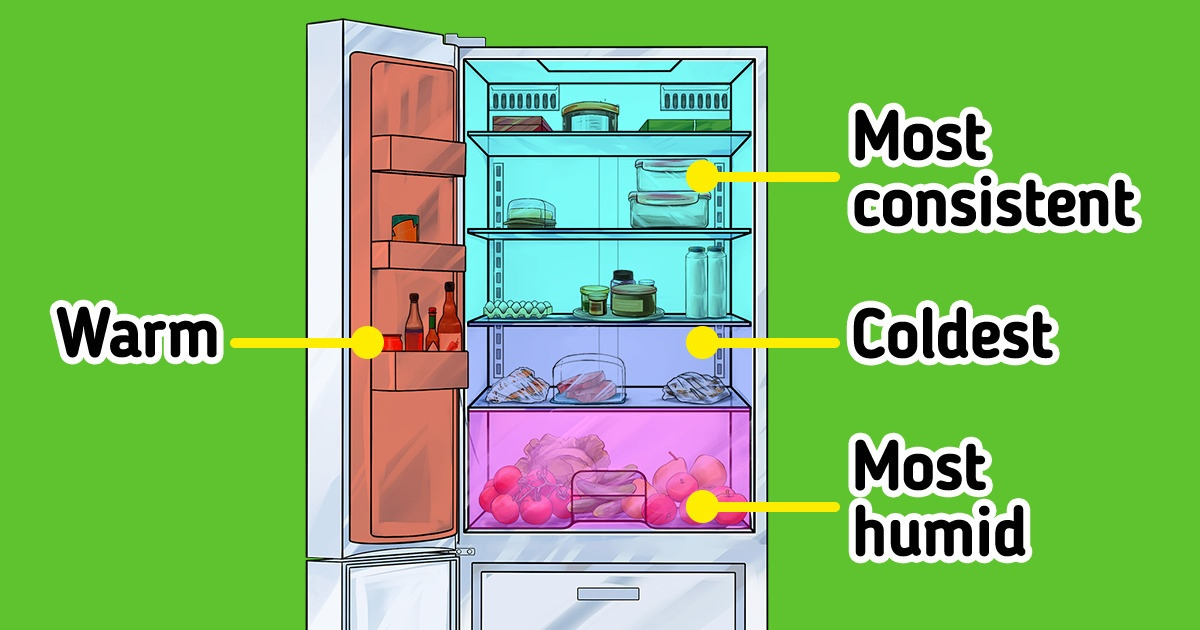
How to Organize Your Refrigerator

Most of us arrange our food in the refrigerator randomly, just to fill up space inside. But when you take the time to organize your fridge, it helps you remember the things you have and what things you’re running low on. There’s also a reason behind every shelf installed inside a fridge. Let 5-Minute Crafts walk you through the step-by-step process of how to arrange your refrigerator shelves as we explain the science behind it.
1. Disinfect your refrigerator.
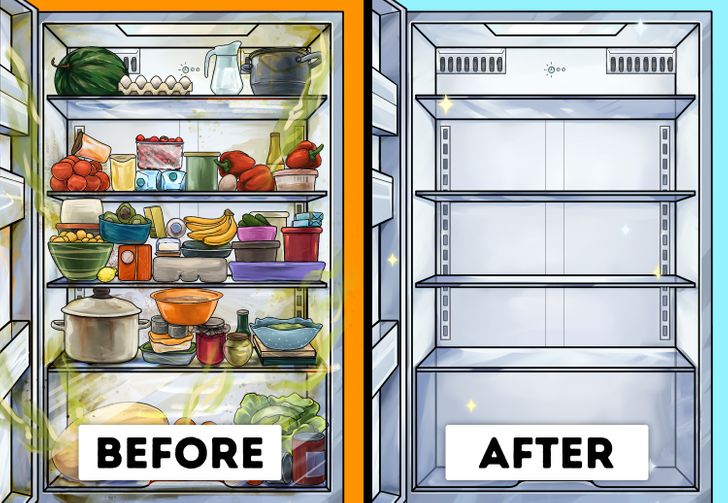
Before you organize everything in your refrigerator, you need to get rid of any bacteria or mold stuck inside. Begin by taking out everything from your refrigerator, then grab some tissue and a disinfectant solution, and clean all the surfaces thoroughly. Then leave the door open for a while to let the bad fumes fade away.
2. Invest in lazy Susans.
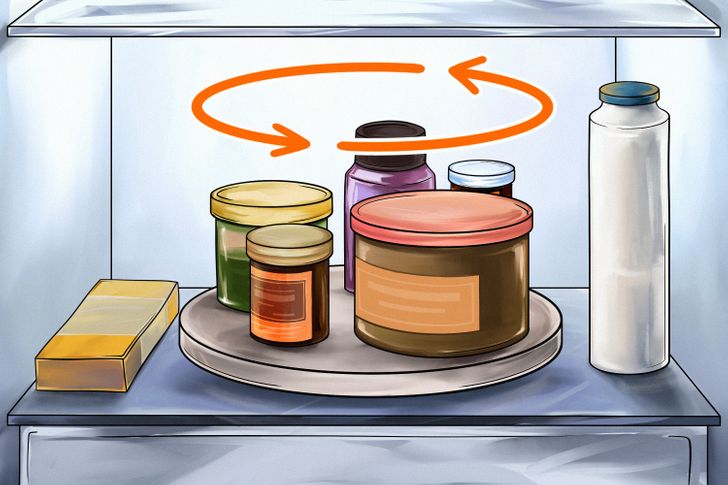
Lazy Susans are trays on disks that can be rotated to help you find the items you’re looking for. You can store jars and other condiments that need quick access.
3. Throw expired items away.
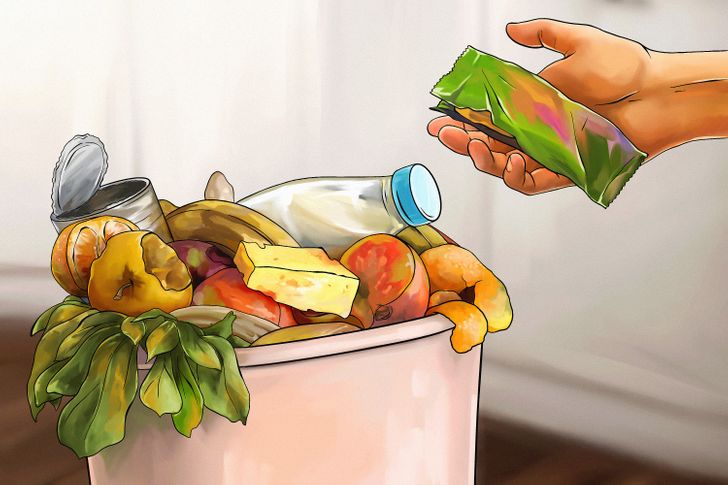
If something has been in your refrigerator for too long, it’s time you got rid of it for good. Also, take note of what produce you tend to use more slowly and make your buying decisions accordingly.
The overall view
Upper shelves
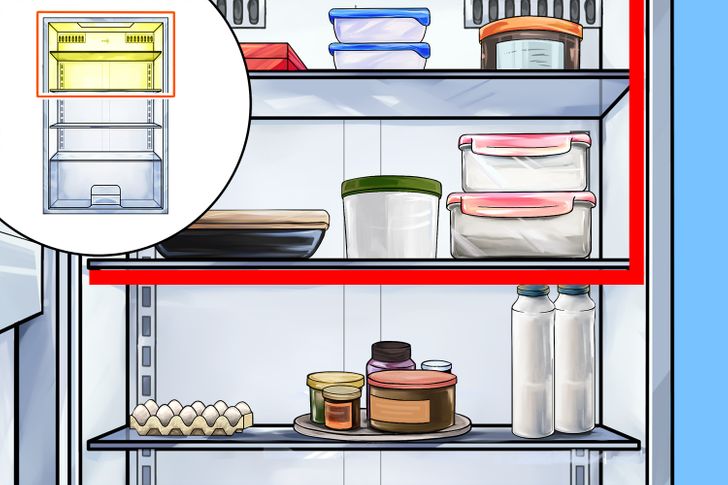
Professionals store items in the refrigerator while considering food safety. Because of this, they organize stuff according to the temperature they need to be cooked at. So, the upper shelves of the refrigerator are meant to store items that need less or no cooking at all, like leftovers, beverages, and ready-to-eat food.
Middle shelves

According to professionals, eggs should be kept on the middle shelf because they need a constant temperature to be preserved properly. The middle shelf also stores dairy products, like milk, cheese, and yogurt.
Doors
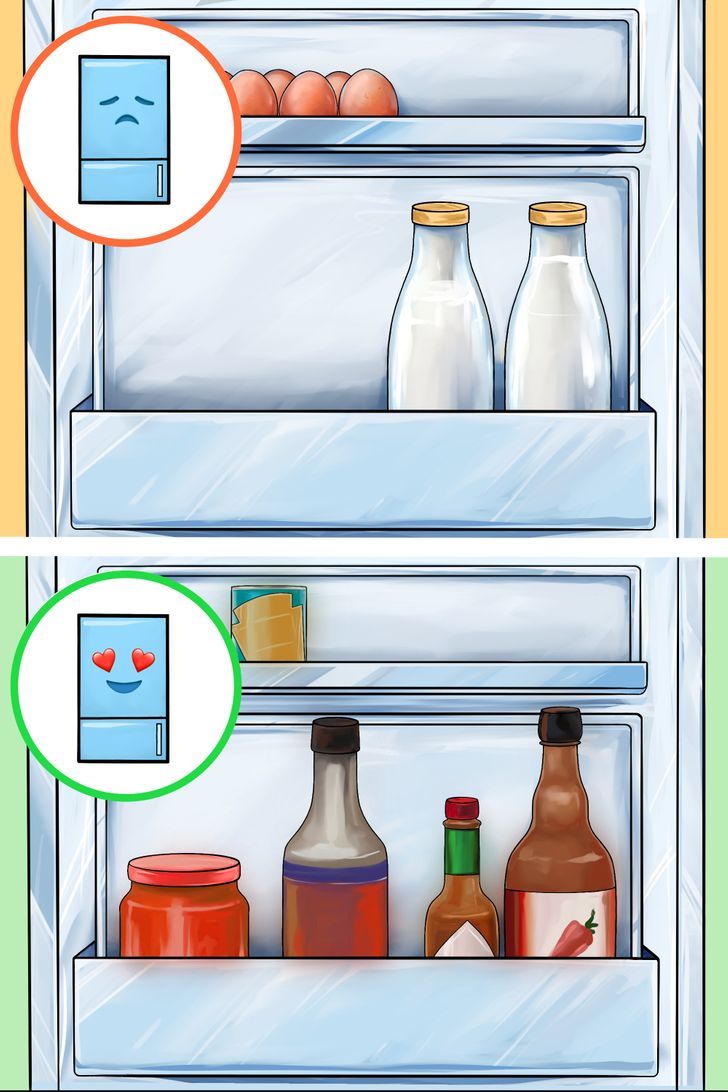
The most common misconception is that eggs are meant to be stored in the egg trays installed on the door. On the contrary, the doors are the warmest part of the refrigerator, and eggs and milk need to be stored in cooler temperatures. Only condiments are meant to be stored on the door’s shelves.
Lower shelves
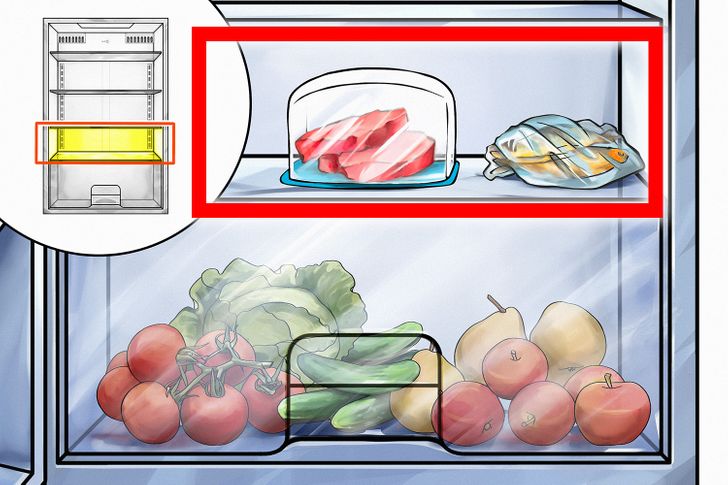
As per the professionals, items that require lower temperatures when cooked should be stored at the top, while the ones that need the highest temperature for cooking should be stored at the bottom. So, on the lower shelves, you can store food items like raw fish, meat, chicken, and more.
Drawers
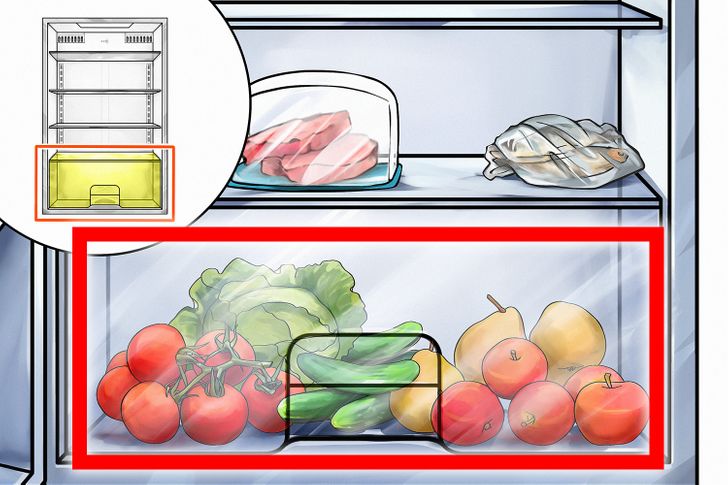
Professionals also recommend storing your fruits and veggies in the refrigerator’s humidity drawers since it will keep the produce enclosed. And this, in turn, keeps the items safe from contamination and bad odors.
Freezer

Your freezer should store foods that are super-sensitive to heat and light, such as ice cream, sauces, soups, and stocks.
Result
